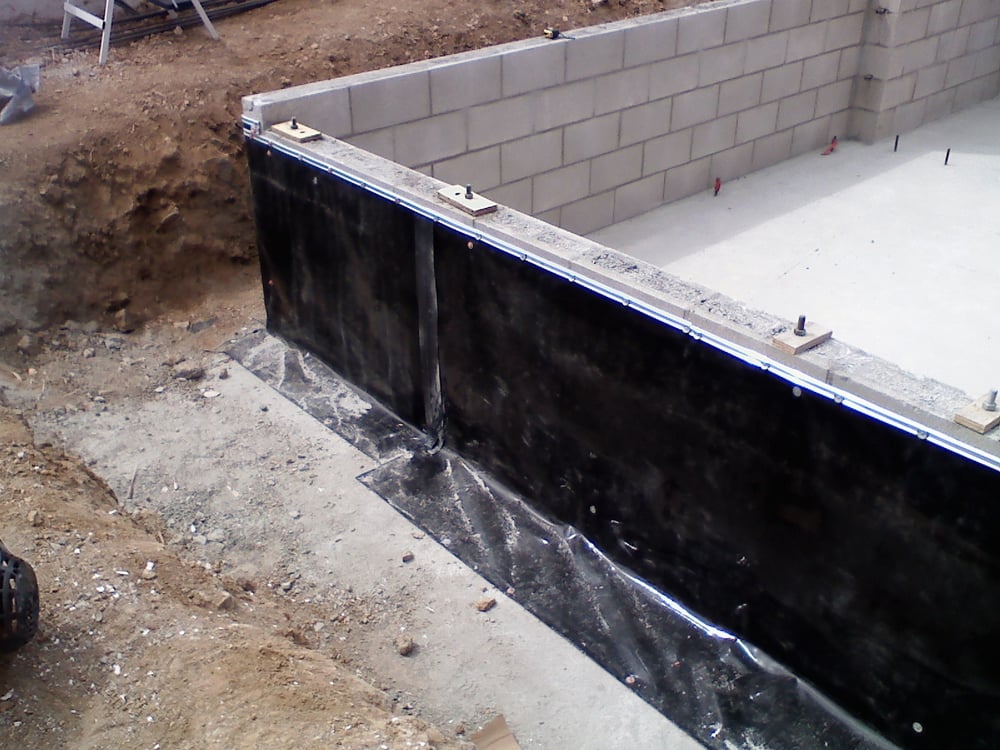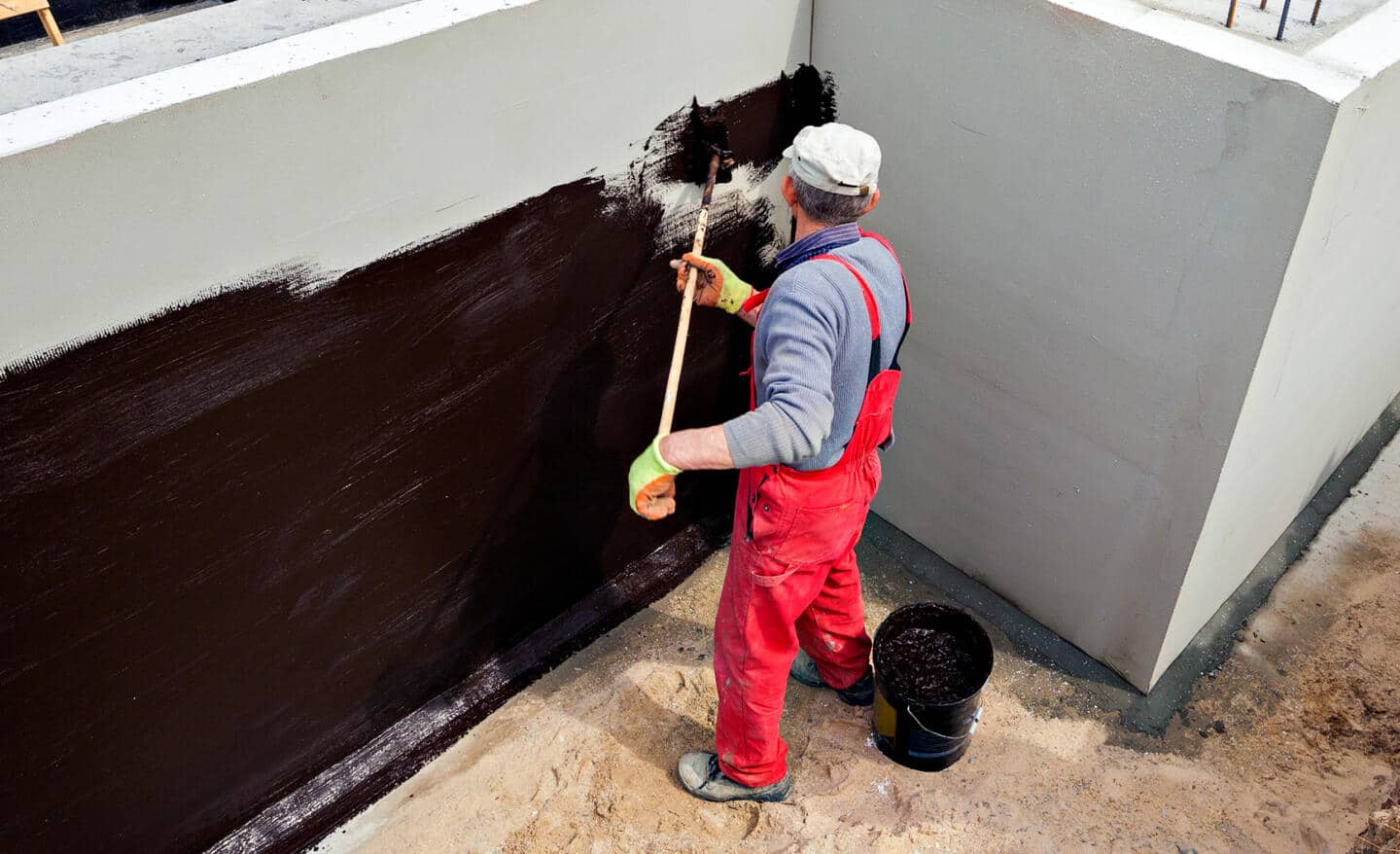
Everything about Waterproofing: Comprehending Its Significance and Benefits for Your Home
Waterproofing is a vital aspect of home maintenance that lots of property owners ignore. It serves to safeguard frameworks from the damaging effects of water seepage, which can cause significant problems over time. Understanding the various techniques and their importance can help property owners make informed decisions. As the conversation unfolds, the genuine inquiry stays: how can efficient waterproofing transform a home's strength versus moisture-related risks?
What Is Waterproofing and Exactly How Does It Work?
Waterproofing is an important process developed to safeguard structures and frameworks from water infiltration. It includes the application of various products and techniques that create a barrier, avoiding water from penetrating surfaces. Usual waterproofing techniques consist of making use of membrane layers, coatings, and sealers, which can be applied to roof coverings, foundations, and wall surfaces. Each approach is chosen based upon the particular demands and conditions of the structure.The effectiveness of waterproofing relies upon correct installation, making sure that all areas are adequately covered and secured. Products such as bituminous membrane layers, liquid waterproofing substances, and cementitious finishings are regularly employed, each offering special advantages. Additionally, water drainage systems may be integrated to redirect water far from susceptible areas, additionally boosting defense. In general, waterproofing not just safeguards architectural honesty but also boosts durability, making it a critical consideration in building and construction and improvement jobs.
The Relevance of Waterproofing for Homeowners
Homeowners face many obstacles in maintaining their properties, and one of the most considerable worries is water damages. This problem can arise from different resources, consisting of heavy rains, flooding, and pipes failures. When left unaddressed, water damages can bring about severe structural troubles, mold and mildew growth, and costly repairs. Waterproofing stands as an important safety net that shields homes from these prospective dangers.
Usual Waterproofing Approaches and Strategies
When thinking about waterproofing techniques, homeowners can pick from a range of effective solutions. Outside waterproofing options concentrate on protecting against water from passing through the structure, while interior waterproofing strategies resolve dampness concerns once they have taken place. Recognizing these alternatives is necessary for preserving a dry and healthy and balanced home setting.
Outside Waterproofing Solutions
To safeguard a residential property from water invasion, numerous outside waterproofing remedies can be utilized, each customized to the details demands of the framework. One common approach is the application of water resistant membranes, which produce an obstacle against dampness. These membranes can be either liquid-applied or sheet-based, relying on the installment requirements. One more reliable technique entails making use of water drainage systems, such as French drains, that redirect water away from the foundation. Additionally, using outside sealers can help shield surfaces from water penetration and corrosion. Landscaping options, consisting of grading and correct water drainage, can also contribute significantly to stop water build-up around the structure. Each of these techniques plays a crucial duty in enhancing the longevity and toughness of the residential property.
Inside Waterproofing Techniques
Interior waterproofing methods are essential for safeguarding a home against moisture and water damage. Usual methods include the application of sealers and membranes, which create an obstacle on walls and floors to protect against water seepage. Interior water drainage systems, such as sump pumps and French drains pipes, effectively redirect water far from prone locations. In addition, vapor barriers can be set up to obstruct wetness from permeating through walls and floors, particularly in basements and crawl areas (Drainage & waterproofing company Omaha). Regular upkeep and evaluation of these systems are necessary to ensure their efficiency. Furthermore, addressing any type of pipes leaks or condensation problems quickly can greatly boost the general waterproofing technique. Together, these methods give house owners with a complete technique to minimizing the threat of water-related problems

Indications Your Home Needs Waterproofing
House owners should recognize key indications that their home might require waterproofing. Noticeable water damage, stuffy odors, and regular mold and mildew growth are crucial indications that dampness is compromising the integrity of the home. Dealing with these issues promptly can prevent further damages and assure a much healthier living environment.
Visible Water Damages
Visible water damages offers as a clear indicator that a home may call for waterproofing steps. House owners ought to be cautious for indicators such as water spots on wall surfaces or ceilings, peeling off paint, and distorted floor covering. These visible signs commonly indicate underlying dampness concerns that, if left unaddressed, can result in much more comprehensive damages and costly repairs. Mold development can also take place, though it will certainly be gone over in the following area. Furthermore, property owners must examine cellars and creep rooms for dampness or efflorescence on concrete surfaces, which indicates moisture infiltration. Discovering these indications early can assist avoid better deterioration of the home's structural integrity. Prompt waterproofing procedures can protect the investment and preserve a healthy and balanced living atmosphere.
Musty Odors Present
Moldy odors are commonly an indication that dampness is check my source sticking around in hidden areas of a home, showing the requirement for waterproofing options. These unpleasant scents frequently develop from damp basements, crawl spaces, or behind wall surfaces, where water seepage may not be quickly visible - Basement waterproofing Omaha. House owners ought to pay very close attention to these odors, as they suggest that excess humidity is entraped, possibly leading to additional damage. The presence of stuffy smells can endanger interior air top quality, affecting the health and wellness and comfort of homeowners. Ignoring this alerting sign can lead to much more extreme issues, making timely analysis and activity crucial. By dealing with waterproofing needs, house owners can eliminate stuffy odors and produce a healthier living setting
Regular Mold Development
Constant mold and mildew growth is a clear indication that a home may be experiencing wetness issues, great site necessitating waterproofing actions. Mold and mildew thrives in wet environments, making it a significant problem for homeowners. Indications of mold can consist of dark spots on wall surfaces, ceilings, and around home windows, as well as a consistent moldy odor. If mold appears consistently regardless of cleaning up efforts, it suggests underlying moisture troubles. This can result from leakages, inadequate water drainage, or high humidity levels. Disregarding these indications can bring about architectural damage and health dangers, particularly for individuals with breathing concerns. As a result, dealing with waterproofing immediately can aid minimize mold and mildew development, making certain a more secure and much healthier living atmosphere. Home owners must take into consideration expert analyses to identify the degree of the wetness problem.
The Long-Term Benefits of Investing in Waterproofing
Buying waterproofing uses property owners an extensive complacency and satisfaction, understanding their residential property is secured against moisture-related damages. This proactive approach considerably lowers the risk of architectural concerns, such as timber rot and structure splits, which can result in expensive repairs over time. Additionally, waterproofing assists keep index interior air quality by reducing mold development, which can have negative wellness effects for occupants.Furthermore, waterproofing improves the resilience of a home, ultimately preserving its value. A well-protected property is a lot more attractive to prospective purchasers, as they are less likely to encounter surprise moisture issues. This investment additionally adds to energy effectiveness; appropriately sealed rooms protect against drafts and minimize cooling and heating prices. In general, the long-term benefits of waterproofing not just assure the architectural stability of a home but likewise foster a much healthier living setting and bolster the residential property's marketability.
Choosing the Right Waterproofing Expert for Your Home
Exactly how can a house owner assurance they pick the most certified waterproofing professional for their demands? The process starts with detailed research and getting several quotes. Home owners need to seek experts with a solid track record, confirmed qualifications, and substantial experience in waterproofing. Examining on the internet evaluations and requesting for recommendations can give valuable understanding right into a service provider's integrity and quality of work.Moreover, it is important to ask about the specific waterproofing methods each specialist utilizes, as well as the products used. House owners must confirm that the chosen service provider is licensed and insured, which shields against prospective responsibilities. A credible professional will certainly likewise provide a comprehensive contract describing the range of work, timeline, and service warranty info. By concentrating on these criteria, homeowners can make educated choices, ultimately causing boosted protection against water damages and an efficient waterproofing remedy tailored to their home's demands.
Frequently Asked Concerns
Can Waterproofing Be Done in Winter Months or Winter?
Waterproofing can be testing throughout wintertime or cold climate due to reduced temperature levels influencing materials' adhesion and curing procedures. Specialized products created for cold problems can allow successful waterproofing applications even in winter months.
Exactly how Often Should I Waterproof My Home?
The regularity of waterproofing a home typically depends on different aspects, consisting of climate and worldly high quality. Specialists recommend examining problems each year and reapplying every five to ten years, or sooner if significant wear appears.
Does Waterproofing Affect Home Resale Value?
Waterproofing can significantly impact a home's resale value (Foundation waterproofing Omaha). Possible customers typically watch waterproofing as a secure versus water damage and mold and mildew, boosting the property's charm and marketability, possibly leading to greater offers and quicker sales
Is DIY Waterproofing Effective for All Residences?
The efficiency of DIY waterproofing differs by home. Variables such as property age, environmental problems, and existing damages impact outcomes. Property owners ought to evaluate their particular conditions prior to attempting DIY options to assure lasting protection.

Are There Eco-Friendly Waterproofing Options Available?
Environmentally friendly waterproofing choices do exist, consisting of natural sealants like beeswax and plant-based products. These options lessen environmental impact while properly securing frameworks from water damages, attracting homeowners looking for sustainable choices for their waterproofing needs.